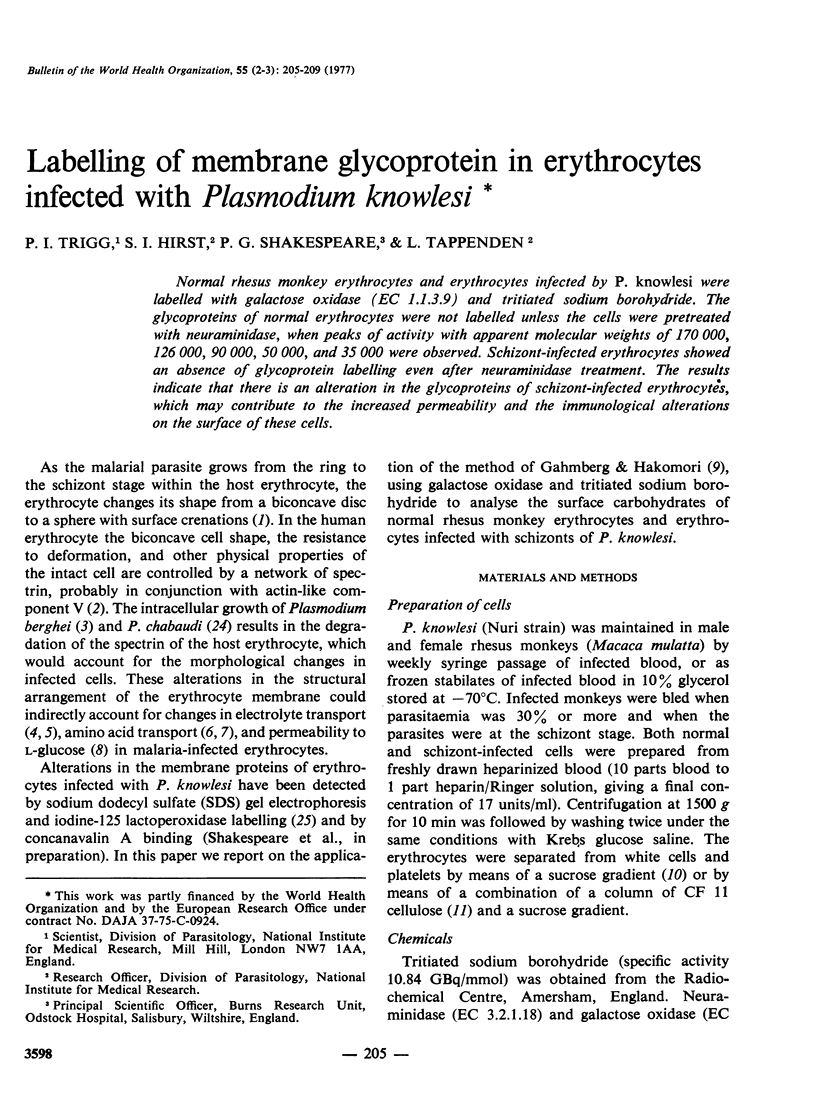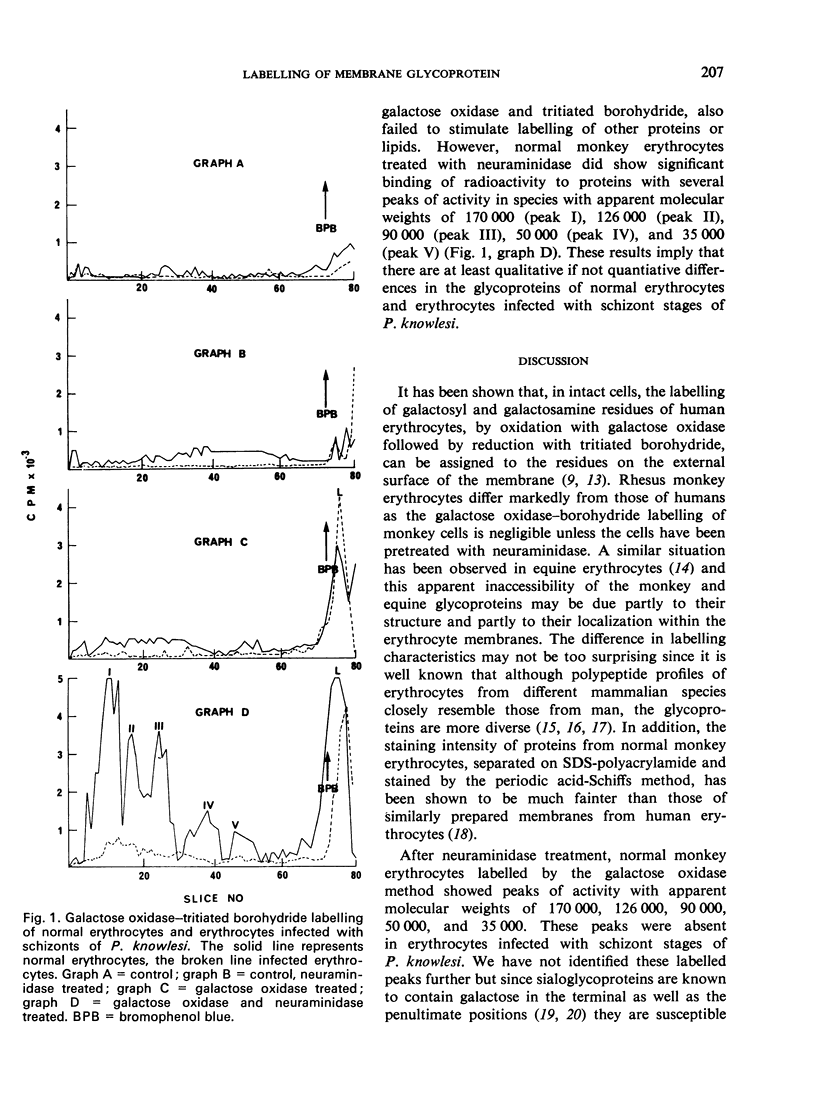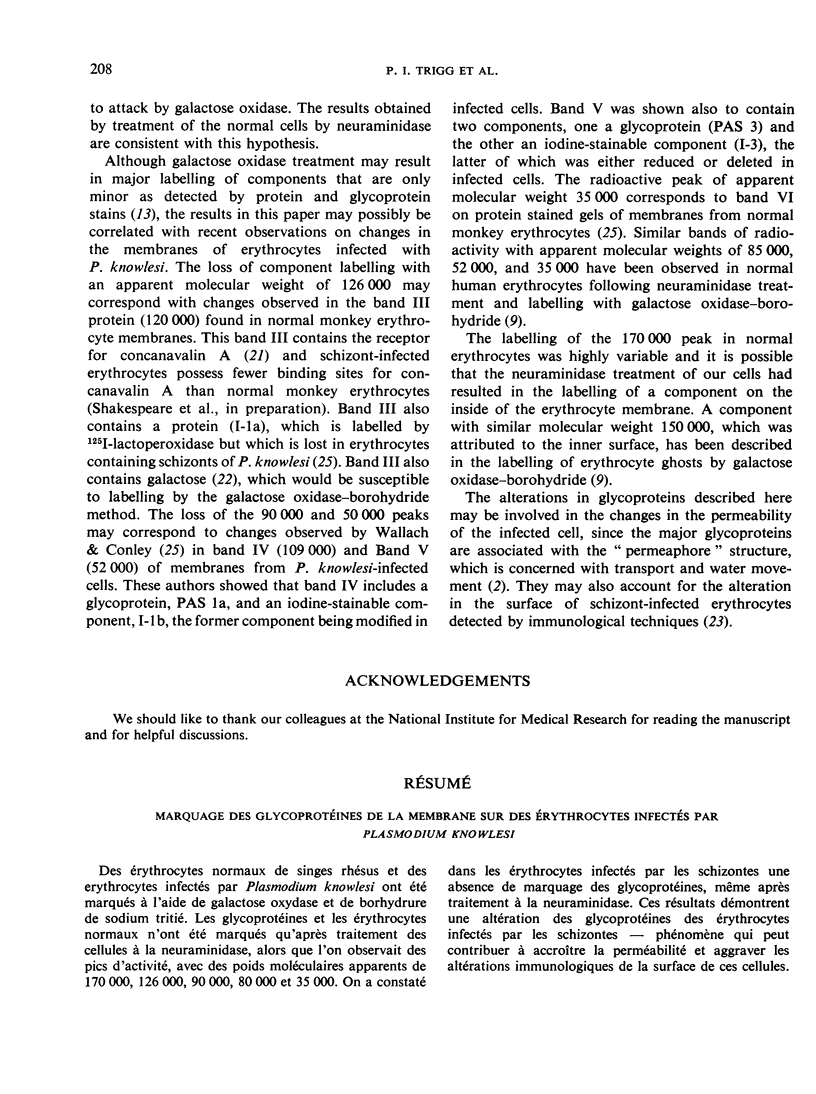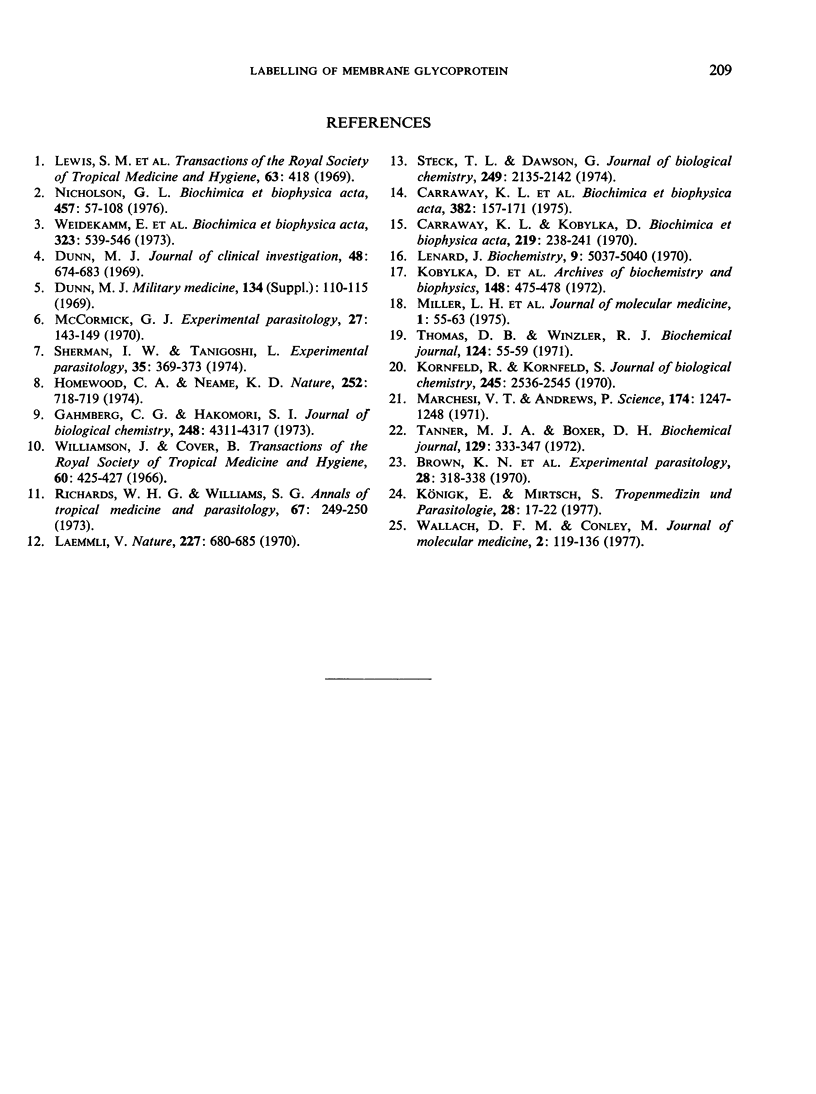Abstract
Normal rhesus monkey erythrocytes and erythrocytes infected by P. knowlesi were labelled with galactose oxidase (EC 1.1.3.9) and tritiated sodium borohydride. The glycoproteins of normal erythrocytes were not labelled unless the cells were pretreated with neuraminidase, when peaks of activity with apparent molecular weights of 170 000, 126 000, 90 000, 50 000, and 35 000 were observed. Schizont-infected erythrocytes showed an absence of glycoprotein labelling even after neuraminidase treatment. The results indicate that there is an alteration in the glycoproteins of schizont-infected erythrocytes, which may contribute to the increased permeability and the immunological alterations on the surface of these cells.
Full text
PDF




Selected References
These references are in PubMed. This may not be the complete list of references from this article.
- Carraway K. L., Kobylka D. Comparative studies of erythrocyte membranes by gel electrophoresis. Biochim Biophys Acta. 1970;219(1):238–241. doi: 10.1016/0005-2736(70)90081-7. [DOI] [PubMed] [Google Scholar]
- Gahmberg C. G., Hakomori S. I. External labeling of cell surface galactose and galactosamine in glycolipid and glycoprotein of human erythrocytes. J Biol Chem. 1973 Jun 25;248(12):4311–4317. [PubMed] [Google Scholar]
- Homewood C. A., Neame K. D. Malaria and the permeability of the host erythrocyte. Nature. 1974 Dec 20;252(5485):718–719. doi: 10.1038/252718a0. [DOI] [PubMed] [Google Scholar]
- Königk E., Mirtsch S. Plasmodium chabaudi-infection of mice: specific activities of erythrocyte membrane-associated enzymes and patterns of proteins and glycoproteins of erythrocyte membrane preparations. Tropenmed Parasitol. 1977 Mar;28(1):17–22. [PubMed] [Google Scholar]
- Laemmli U. K. Cleavage of structural proteins during the assembly of the head of bacteriophage T4. Nature. 1970 Aug 15;227(5259):680–685. doi: 10.1038/227680a0. [DOI] [PubMed] [Google Scholar]
- Lenard J. Protein components of erythrocyte membranes from different animal species. Biochemistry. 1970 Dec 8;9(25):5037–5040. doi: 10.1021/bi00827a032. [DOI] [PubMed] [Google Scholar]
- Marchesi V. T., Andrews E. P. Glycoproteins: isolation from cellmembranes with lithium diiodosalicylate. Science. 1971 Dec 17;174(4015):1247–1248. doi: 10.1126/science.174.4015.1247. [DOI] [PubMed] [Google Scholar]
- McCormick G. J. Amino acid transport and incorporation in red blood cells of normal and Plasmodium knowlesi-infected rhesus monkeys. Exp Parasitol. 1970 Feb;27(1):143–149. doi: 10.1016/s0014-4894(70)80018-2. [DOI] [PubMed] [Google Scholar]
- Sherman I. W., Tanigoshi L. Incorporation of 14C-amino acids by malarial plasmodia (Plasmodium iophurae). VI. Changes in the kinetic constants of amino acid transport during infection. Exp Parasitol. 1974 Jun;35(3):369–373. doi: 10.1016/0014-4894(74)90042-3. [DOI] [PubMed] [Google Scholar]
- Steck T. L., Dawson G. Topographical distribution of complex carbohydrates in the erythrocyte membrane. J Biol Chem. 1974 Apr 10;249(7):2135–2142. [PubMed] [Google Scholar]
- Tanner M. J., Boxer D. H. Separation and some properties of the major proteins of the human erythrocyte membrane. Biochem J. 1972 Sep;129(2):333–347. doi: 10.1042/bj1290333. [DOI] [PMC free article] [PubMed] [Google Scholar]
- Thomas D. B., Winzler R. J. Structure of glycoproteins of human erythrocytes. Alkali-stable oligosaccharides. Biochem J. 1971 Aug;124(1):55–59. doi: 10.1042/bj1240055. [DOI] [PMC free article] [PubMed] [Google Scholar]
- Weidekamm E., Wallach D. F., Lin P. S., Hendricks J. Erythrocyte membrane alterations due to infection with Plasmodium berghei. Biochim Biophys Acta. 1973 Nov 16;323(4):539–546. doi: 10.1016/0005-2736(73)90162-4. [DOI] [PubMed] [Google Scholar]


